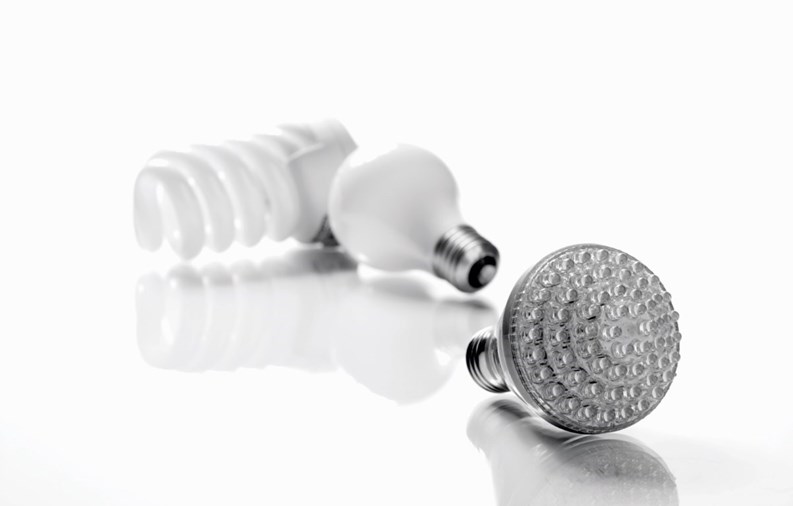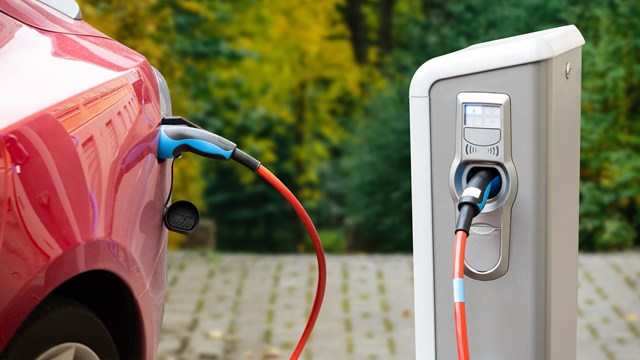Lighting in the U.S. alone accounts for approximately 22 percent of all electricity used, according to the U.S. Department of Energy. It is no wonder that in the current economic and environmentally-sensitive climate a lot of effort is going towards finding, improving and engineering new and improved light sources.
Among those innovations are light-emitting diodes, better known as LEDs. Despite the fact that LEDs have been around for decades, with recent improvements they have become the most promising “low hanging fruit” around for energy conservation in lighting.
Using far less energy than even Compact Fluorescent Lights (CFLs)—today’s gold standard for thriftiness—they also promise life spans many times longer than conventional lighting. For this reason, LEDs are turning up in High-Def TVs, in your local hardware aisle and in early-adopter condominiums.
Savings Outdoors
Condos looking to invest in LED technology are hoping to see positive results along the lines of the Palace Pier in Toronto, Canada. This 46-floor condo complex underwent a $2.4 million lighting renovation in 2008. The traditional halogen lights in all the interior corridors were replaced with new LED lights. Usage shifted dramatically from 35 watts of electricity under the old lighting to only 4 watts after the conversion. It’s predicted that the Palace Pier will use 87 percent less energy and the switch from halogen to LED will eventually save approximately $40,000 per year with an estimated 110-ton reduction in greenhouse gas emissions.
Along with condominiums, numerous cities around the world are switching to LEDs, including Boston, which recently upgraded sections of the Boston Common with LED-powered lampposts on walking paths and sidewalks. The LEDs are proposed to use less than half of the energy of the previous lights and last three to four times longer. Boston has also been replacing traffic signals and pedestrian crossing lights with LEDs at a projected cost savings of nearly $400,000 annually.
A shopping plaza in Manchester, New Hampshire also saved considerable money by making the switch, replacing 22 high-pressure sodium lights and six metal-halide lights with 25 LEDs. Occupancy sensors were also installed, allowing light output to change when cars were present. This not only resulted in a 58 percent energy savings but the return on investment is expected to take only three years.
Today, metal halide and sodium- or mercury-vapor lamps are typically used to light condo parking lots and garages, but some communities are making the switch to LEDs for the same reasons as the city of Boston and the shopping center in Manchester.
In fact, that's one of the fastest-growing markets for LED lighting, says Gary Rosenfield, general manager of JuiceWorks LLC, a joint venture company with Sea Gull Lighting/parent company Generation Brands, based in Cary, North Carolina. “This is due to not only the quality of light, but the savings on energy and maintenance that LED lighting offers. Of course, all lighting needs to meet the requirements of the National Electrical Code, and certifying agencies for safety and fire prevention.” Condos should also make sure that installed outdoor LEDs are able to keep dust and water vapors out of the fixtures.
Condo Interior Uses
LEDs also work well indoors, as long as they're used in the right location. As the Palace Pier found, to get the most from their investment, condos should concentrate on installing the lighting in areas that get the most use and require consistent long-duration illumination. Lobbies and hallways are potentially well-suited for LEDs, whereas little-used mechanical rooms and closets are less optimal and will have a far greater payback time. Low-traffic, infrequently used areas lend themselves better to use of fluorescents.
As for concerns about the quality of the light thrown by next-generation bulbs and diodes, “There are two ways to go really,” says Max Hoover of GoodMart in New York City. “One, you have a screw-in compact fluorescent light bulb or screw-in incandescent light bulb. My co-op, for example, has all incandescents. And nobody wants to seem to change the ambiance, but that's not really a valid argument anymore. You can just screw-in the LED light bulbs and they work great. They're dimmable and have perfect ambiance—nice, warm white light, or you can put in the fixtures that were purpose-built for the LEDs, which gives you significantly better performance. So if you're doing a lobby remodel, that's the time to be looking at getting the right LED fixtures from the get-go.”
“CFLs are better at creating soft patterns of light, where light is emitted in all directions, such as a wall sconce or a decorative glowing pendant," says Naomi Miller, senior lighting engineer at the Pacific Northwest National Laboratory (a Department of Energy lab) in Portland, Oregon.
FAQs & Caveats
Because LEDs are new and evolving rapidly, there are overstated claims about their performance, cost savings and life span. Misinformation occurs partly because many situationally-dependent variables come into play when assessing cost, efficiency and life span of LEDs. The technology is also changing so fast that most individuals find it hard to keep up with the ever-shifting product specs. Sorting through the hype to get to the truth about LEDs can be challenging for any condo. Here then, are some of the most common questions, along with a little explanation.
Cost
Most local utility providers and state energy offices now provide incentive programs to condos making the switch to energy-efficient LEDs. Incentive programs aside, condos can save money; however, calculating just how much in savings will depend on many factors. These include:
• The type of LED lighting product selected.
• The expense of maintenance and upkeep (depends on the product selected).
• The cost of energy in the area the condo is located.
• The number of hours the LED lighting operates.
“The technology is ready now and costs are coming down,” says Rosenfield, “However, it is well known that there are still many manufacturers that are not providing good quality LED products. We would advise selecting an LED product that is Energy Star approved as those are meeting the highest standards for performance, reliability, and efficacy. Most utility companies offer incentives to switch to energy-efficient lighting, which are readily available to both commercial and residential customers.”
"LEDs are pretty moderately priced around, around the same prices as CFLs," says Joan Rice of Advantage Lighting & Electrical Supply in South Orange, New Jersey.
According to William Johnson, marketing manager of Cooper Lighting, a national company based in Georgia, both LEDs and CFLs offer significant energy savings and long life compared to incandescent light sources. “Dimming is also now available on CFL fixtures as well as for LED products. Because CFL technology has been in practice for many years the cost for residential CFL applications is lower than the newer LED technology. Yet LED can offer even longer life than CFLs,” Johnson explains.
What About Rebates?
Some energy companies do offer rebates to buildings changing over from incandescent bulbs, particularly for large co-op or condo buildings. And if you do change over, there is a rebate. You have to just check with your local service provider.
"The rebate programs are just now starting to include LEDs in the list of prescribed measures," says Hoover, "So that's sort of happening as we speak, and depending on whether you're in New Jersey or New York, the rebate programs differ. So it's really on a case-by-case basis. We would look at that and maximize the rebate. As far as specials go, there are constantly new products being introduced."
It's not a bad idea to consult with a lighting specialist, lighting engineer or a lighting architect when exploring LED cost. Experts will be able to do a cost analysis to determine the condo’s return on investment. “The technology is new enough that a specialist who is up to speed on LEDs is worth the money,” says Miller.
Life Span
“Typically, we see LEDs stated average rate of life up to 50,000 hours, whereas the maximum life we've seen with CFLs is 15,000 hours,” says Hoover. “So that's advantage number one. Advantage number two is that LEDs can be up to 30 percent more efficient than CFLs. In other words, you start with how much light you need, and then figure out what wattage lamp you need to get that amount of light, you could end up with a lower wattage LED light bulb or light fixture than you would with a CFL. Then advantage number three is environmental superiority. Given the fact that the LED lasts longer, you're obviously buying fewer things, you're transporting fewer things and using less fuel to do so. You're putting fewer things in landfills. And CFLs contain mercury, which LEDs do not. All the parts in [LEDs] meet strict environmental guidelines which CFLs can't [because] they always contain small amounts of mercury.”
The multiple components that make up LEDs need to be factored into the life span equation as well. What it boils down to is more parts, the more potential for breakage—and not all components are created equal, performance-wise. “The LED chip itself may last 25,000 to 50,000 hours or longer. However, the driver/power supply may not last that long. It depends on the product design and the heat it disperses and the heat of the environment in which it is operating,” says Miller.
Johnson also notes the longer life span. “Compare a CFL of 12,000 hour average life and a LED that can offer over 50,000 hours life. A properly designed LED luminaire should last beyond 50,000 hours; with 70 percent of the lumens still operating at that point,” he says. According to Johnson, LED light output diminishes very slowly over time.
Typically, a three- to five-year warranty is given on LEDs. But industry professionals warn that if condos will be using the LEDs less than 24/7, then a three- to five-year warranty might not be long enough. Condos might need to negotiate a longer warranty on their LED products. Likewise, it is important that condos make sure they get a warranty on the life, light output, and color consistency of the LED.
Light Quality
According to Miller, “You get what you pay for” could not be a better saying when it comes to LED light quality. “Yes, there is a cost differential between nice light and ugly light with LEDs. At this time the more expensive the LEDs, the better quality light."
LEDs should not be thought of as your average light bulb. In fact, they are typically not a bulb at all. LEDs are lighting systems that have many different components that work together with differing parts and elements to create light. The most common format for LEDs are clustered in a shape that doesn't look so very different from an ordinary light bulb, but the technology is very flexible—diodes of nearly any color can be arranged into any type of array, limited only by the designer's and client's imagination and budget.
Condos should “test” the LEDs out before fully installing them. Questions to ask are: is the color and lighting being given off flattering to skin tones? Are the architectural finishes in a space being enhanced or diminished by the introduction of the LEDs? Is any amount of flicker being created? And how much glare is produced?
Here to Stay
Manufacturers today are bringing to market LEDs that are packaged and configured more like traditional bulbs. Heavy hitters such as GE and Panasonic are jumping on the LED bandwagon with LED bulbs that have adaptive-fit capabilities for screw-in fixtures. Still considered on the cusp of new technologies, these bulbs presently have a fairly high price point and the entrance of these powerhouses into the LED lighting market comes with some healthy skepticism.
However, Miller has a different spin: “It means LEDs are a technology that is here to stay," she says. "The major players are producing some good products and backing them up with their reputation and a warranty, but we should add that some of the new players in the market are producing impressive products as well.”
As more residential buildings join the movement toward greener, more efficient daily operations, LEDs and other emerging technologies offer options for illuminating indoor and outdoor spaces while easing communities’ bottom lines and carbon footprints. Before your building super or handyman replaces another burned-out incandescent bulb, it might be a bright idea to look into these earth-friendly alternatives.
Hillary Pember is a freelance writer and a frequent contributor to New England Condominium magazine, a Yale Robbins’ publication. Additional reporting by David Chiu.







Leave a Comment